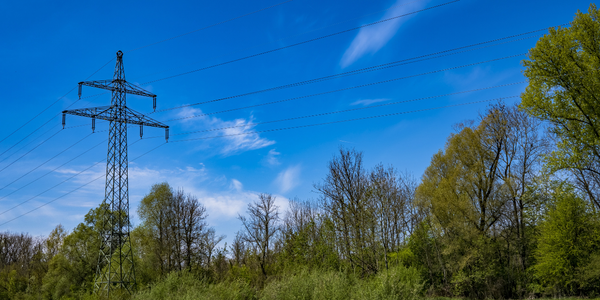公司规模
Large Corporate
地区
- America
国家
- Canada
产品
- Google Analytics Campaign Tracking
- Google Website Optimizer
- Google Analytics Event Tracking
技术栈
- Google Analytics
- Google Website Optimizer
实施规模
- Enterprise-wide Deployment
影响指标
- Customer Satisfaction
- Brand Awareness
技术
- 分析与建模 - 实时分析
适用功能
- 销售与市场营销
用例
- 需求计划与预测
服务
- 数据科学服务
关于客户
新不伦瑞克省文化、旅游和健康生活部 (CTHL) 是加拿大新不伦瑞克省的一个政府部门,负责推广该省的旅游业。他们与其代理机构 T4G 合作,鼓励潜在游客访问该省。2011 年,他们推出了一个网站,上面列满了新不伦瑞克省的旅行创意,以支持他们的夏季活动——“我的新不伦瑞克发现”。主要目标是通过适合两类目标受众兴趣的活动和体验来增加他们的参与度。他们需要一个足够灵活的平台来评估哪些方法有效,哪些方法无效,以及一个可以随时更改战略和战术的合作伙伴。
挑战
新不伦瑞克省文化、旅游和健康生活部 (CTHL) 及其代理机构 T4G 一直致力于提升该省的旅游业。他们推出了一个网站,其中包含大量新不伦瑞克省的旅行创意,以支持 CTHL 的夏季活动——“我的新不伦瑞克发现”。主要目标是通过适合他们兴趣的活动和体验来增加两类目标受众的参与度:“轻松旅行者”和“文化探索者/真实体验者”。CTHL 需要季节性营销活动的支持。他们希望使用分析来评估其效果,并影响未来活动的决策。由于吸引游客的时间既短暂又竞争激烈,他们需要一个足够灵活的平台来评估哪些方法有效,哪些方法无效,以及一个可以随时更改战略和战术的合作伙伴。
解决方案
T4G 在所有营销链接上实施了 Google Analytics Campaign Tracking,并密切监控哪些来源发送了最相关和参与度最高的流量。这些信息使他们能够就如何集中营销资金以获得最高投资回报提出建议。使用事件跟踪,T4G 跟踪了“进行咨询”表单在特定新不伦瑞克体验中的使用频率,并将其设置为 Google Analytics 中的目标。他们还测量了文本链接、图片链接、按钮交互和退出第三方网站的情况,以了解它们对用户体验的全面影响。然后,他们为活动着陆页设置了 Google Website Optimizer 测试。原始版本有很多链接可供点击;一些链接会引导访客深入网站,而一些链接会将访客完全带离网站。他们针对其测试的变体页面只为访客提供了两个选项,每个关键受众群体都有一个链接,并带有明确的行动号召。
运营影响
数量效益

Case Study missing?
Start adding your own!
Register with your work email and create a new case study profile for your business.
相关案例.
Case Study
Pepsico's Transformation to Smarter Sales Forecasting with Designer Cloud
PepsiCo, a global consumer packaged goods company, faced a significant challenge in calibrating sales forecasting to supply the right product quantities to its retailers. The sales forecast incorporated a variety of data, including warehouse data, store stock data, and promotional forecast data, all of which were provided by retailers in different file formats and delivered using various methods. The primary challenge was the speed of preparing a sales forecast. With the existing Microsoft Access and Excel-based processes, the time required to prepare this data was so extensive that analysts could only leverage it once a month or not at all. This inefficiency risked under or oversupplying retailers, potentially impacting PepsiCo's business operations and customer relationships.

Case Study
Gexa Energy and AutoGrid's Innovative Demand Response Programs in ERCOT
Gexa Energy, a leading retail electricity provider in Texas, was seeking to introduce new demand response programs for its commercial and industrial customers in the Electric Reliability Council of Texas (ERCOT) market. The challenge was to provide a platform that would allow these customers to lower their energy bills by adjusting their energy consumption during peak energy demand or high wholesale electricity prices. The solution needed to be intelligent, scalable, and offer both manual and automated options for adjusting energy consumption. The demand response programs needed to include Emergency Response Service (ERS), Real-Time Price Response (RTPR), and 4 Coincident Peak (4CP).

Case Study
ZettaNet's Agile Juniper Network Meets Booming Digital Demand in Australia
ZettaNet, a privately-held company based in Perth, Australia, was facing a significant challenge due to the exponential demand for enterprise network, data center, and cloud services in the region. The company's business growth necessitated an upgrade of their core network to meet the increasing bandwidth requirements of their customers. The customers, which primarily include managed service providers, were demanding 1 Gbps connectivity between locations. These service providers then deliver network, data center, cloud, and voice services to a diverse range of customers including local businesses, schools, hospitals, residential communities, and government offices in Western and Southern Australia. The challenge for ZettaNet was to meet this high-capacity network services demand while maintaining profitability.
Case Study
Procter & Gamble Implements Terra Technology's Demand Sensing for Improved Forecast Accuracy
Procter & Gamble (P&G) faced significant challenges in accurately forecasting short-term demand for their consumer products. Their existing 24-month forecast provided a good overview for monthly or weekly production, but it was insufficient for the immediate needs of supply chain planning and manufacturing teams. These teams required a short-term forecast to plan production effectively and avoid 'fire-fighting' practices. P&G needed a solution that could provide accurate short-term demand forecasts to ensure agility and flexibility in manufacturing, especially for products with very short production and order lead times. The company explored various solutions but found that most big software companies lacked the agility to meet their specific demand sensing needs. Terra Technology's Real-Time Forecasting, later known as Demand Sensing (DS), emerged as a promising solution due to its specialized focus on consumer packaged goods (CPG) demand planning and forecasting.
Case Study
MARS Incorporated: Leading a Global Digital Transformation
MARS Incorporated, a multinational manufacturer, faced significant challenges in digitizing and standardizing processes across its mid-markets globally. The company's reliance on legacy solutions necessitated continuous, time-consuming upgrades and made data compilation and comparison across different regions and business units difficult. Excel spreadsheets were extensively used for forecasting in smaller markets, leading to disconnected processes, siloed working environments, and increased risk of data inconsistencies and inaccuracies in demand forecasting. MARS also struggled with a lack of visibility across its midmarket footprint, scattered critical data across various systems and spreadsheets, a low degree of automation, and insufficient statistical analytics for demand planning. The absence of a standard process for demand planning made it challenging to consolidate KPIs and gain a comprehensive view of demand trends and supply chain performance.

Case Study
Enterprise AI for Demand Forecasting and Production Scheduling in Global Agribusiness
A global agribusiness and food manufacturer, producing over 80 million pounds of food products per year across eight production lines, faced significant challenges in demand forecasting and production scheduling. The company's only customer, a global retailer, exhibited highly variable demand, leading to discrepancies with the manufacturer's weekly demand forecast. Traditional demand forecasting solutions, based on statistical algorithms, were unable to cope with the short lead times and daily sales orders due to the short shelf life of food products. This resulted in unfulfilled customer orders. Additional rule-based solutions procured to improve production scheduling also failed to optimize schedules and significantly improve manufacturing operations.







